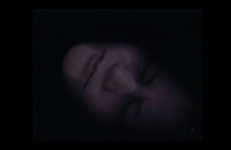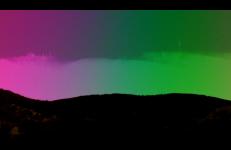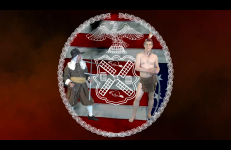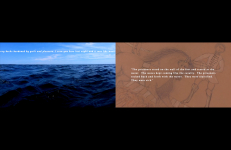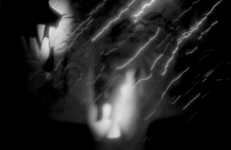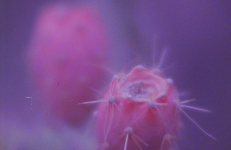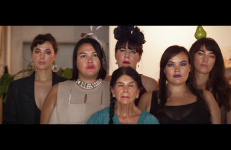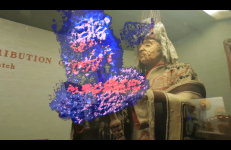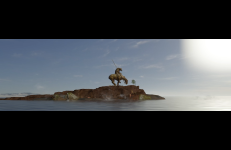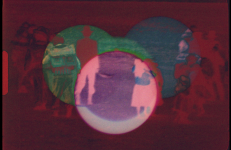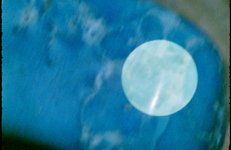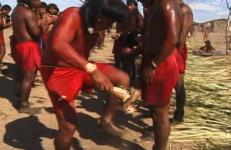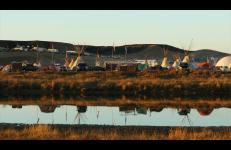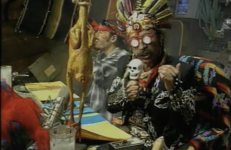A video diary about Cuthand's efforts to undergo artificial insemination. Cuthand contemplates a desire to have children and its relation to preserving Indigenous culture.
Indigenous
2 Spirit Dreamcatcher Dot Com queers and indigenizes traditional dating site advertisements. Using a Butch NDN 'lavalife" lady (performed by director TJ Cuthand), 2 Spirit Dreamcatcher Dot Com seduces the viewer into 2 Spirit "snagging and shacking up" with suggestions of nearby pipeline protests to take your date to, and helpful elders who will matchmake you and tell off disrespectful suitors. It's the culturally appropriate website all single 2 Spirit people wish existed.
New to the 2 Spirit lifestyle? `Want to talk to someone in the Spirit and the Flesh instead of reading The Spirit and the Flesh? We have just the service for you! Call now and for only 19.99 a month you can get instant unlimited telephone access to traditional knowledge and support. We also provide monthly gifts for subscribers, call now and we can hook you up with this beaded whisk! Perfect for DIY spankings and pancakes the morning after your first snag!
Gallup, New Mexico, in the American Southwest, has hosted the Inter-Tribal Indian Ceremonial annually since 1922. Ceremonial promotes native traditions, advocates understanding and cooperation among all peoples of the Americas, and contributes to northwest New Mexico’s regional economic development.
Located on the Lofoten Islands in Northern Norway, Acoustic Ocean sets out to explore the sonic ecology of marine life. The scientist as an explorer and important mediator of the contemporary understanding of our planetary ecosystems is a central figure in this video. She makes her appearance in the person of a Sami (indigenous of northern Scandinavia) biologist-diver who is using all sorts of hydrophones, parabolic mics and recording devices. Her task is to sense the submarine space for acoustic and other biological forms of expression.
"Interested in the hidden corners of exoticism and a reinterpretation of history as an aesthetic challenge, Colombian resident in France, Laura Huertas Millán (Bogotá, 1983), presents in Aequador—in her own words—'a parallel present modified by virtual reality, an oneiric allegory, an uchronic dystopia.' With foundations on science fiction—uchronia as a source for an alternative history can actually be seen as a subgenre—, Aequador establishes parallelisms—in a complex and deliberately fragmented way—between the (virtual) relics and ruins of an ideal 3-D architecture embed
A welcome as warning. Frequent collaborators and proxies for New Red Order - Jim Fletcher and Kate Valk co-host a confrontation with the viewer about the passivity of ongoing settler-colonial occupations, and introduce a contrite, yet self-congratulatory stew of televised recordings of public apologies to Indigenous peoples from the heads of state around the globe. Featuring Donald Trump, Queen Elizabeth, Prime Minister of Australia Kevin Rudd, President of Taiwan Tsai Ing-wen, Prime Minister of Canada Justin Trudeau and more!
Anhedonia doesn't play to the back of the church. It shoots directly to the point with poetry and images that evoke controversy in one mind set and passion in another. Depression and suicide are met head on with Cuthand's honesty. Anhedonia shocks people into opening their eyes to the source of the illness in the Aboriginal community. Statistics, split images, words and flesh meld together making this short film long on compassion, screaming out for help and recognition of the mentally ill's dream of someday having a normal life.
“The individual is not an autonomous, solitary object but a thing of uncertain extent, with ambiguous boundaries. So too is matter, which loses much of its allure the moment it is reduced to an object, shorn of its viscosity, pressure and density. Both subject and matter resist their reduction into objects. Everything is interconnected and intertwined.”
— Kengo Kuma
Dexter and Sinister, forever stuck on the official New York City Seal, engage in an animated dialogue on noble savagery and the chronomorphic persistence of the practice of ‘playing indian’.
Part of The Savage Philosophy of Endless Acknowledgment suite.
Cloudless Blue Egress of Summer is a two-channel synchronized video installation. A composite of the two channels presented side by side in one video is available from Video Data Bank for educational use only.
This is the invocation to the gods, the incense to the gods. A kinetic dance to the gods. Behold the hieratic nature of Tonatiuh (The Sun) and the ferocity of Tlaltecuhtli (Goddess of the Earth) raising her agitation from the white smoke of the burned Copalli, Mesoamerican aromatic resin, sacred resin that tears celluloid with smoke, white hair, on the dark background of the world.
Coyolxauhqui recasts the mythical dismemberment of the Aztec Moon goddess Coyolxauhqui by her brother Huitzilopochtli, the deity of war, the Sun and human sacrifice. The film is a poem of perception, one that unveils how contemporary Mexican femicide is linked to a patriarchal history with roots in deeper cultural constructs.
Six powerful native women gather up to celebrate a new beginning and the end of the world as we know it.
Featuring: Alanis Obomsawin, Nadia Myre, Swaneige Bertrand, Nahka Bertrand, Emilie Monnet, Caroline Monnet
This title is also available on the compilation What Was Always Yours and Never Lost.
The looped work Culture Capture 001 takes place within the American Museum of Natural History. We come to recognize the masked figures observing Native American objects held inside the collection cases as accomplices of the public secret society. They diligently photograph, scan, and record these objects through smartphones, transferring the images and dimensional information of them into data to potentially be reconstituted and liberated from these settings.
Culture Capture: Crimes Against Reality extends NRO’s Culture Capture series towards examining desires for monumentality and its dissolution, pursuing fantasies of removal by morphing monuments into metastasizing flesh via ritualized photogrammetric capture and virtual manipulation, performing a sort of sympathetic magic to clear space for Indigenous futures.
Half tongue-in-cheek absurdism and half deadly earnest, Culture Capture: Terminal Adddition continues New Red Order’s ongoing project of “culture capture,” recruiting viewers to participate in a program of practical strategies to counter the “salvage mindset,” which sets aside Indigenous culture and sovereignty by consigning it to the past.
Half tongue-in-cheek absurdism and half deadly earnest, Culture Capture: Terminal Adddition continues New Red Order’s ongoing project of “culture capture,” recruiting viewers to participate in a program of practical strategies to counter the “salvage mindset,” which sets aside Indigenous culture and sovereignty by consigning it to the past.
In Danza Solar, Super8 archival footage of dancers is superimposed with 16mm views of the sun (suns). The film evokes a communal solar trance, both Andean and Mesoamerican. Part of a collection of works the collective considers "Shamanic Materialism," Danza Solar is a Mesoamerican spell unleashed.
A brief glimpse into the cycles of Coyolxauhqui, the moon goddess, whose cycles used to be a dance. A fast-paced jazz soundtrack accompanies the quick, darting movements of the moon.
After the screening of his film Wai'á rini, the power of dream in other Xavante villages, the people of Aldeia Nova from the São Marcos reservation asked Divino to make a film on the same ritual, the Wai'á ceremony. In this ceremony the young men are initiated into the spiritual world to develop their curative power. This is a new experience for Divino, as he has to shoot in a different village, but also find a way to try new tricks and to develop his editing skills.
Various languages.
Direction and photography: Divino Tserewahú
During a video workshop in the Kuikuro village in the Upper Xingu, Brazil, an eclipse takes place. Suddenly, everything changes. The animals take new forms. Blood falls from the sky like rain. The sound of the sacred flutes crosses the dark night. There is no time to lose. One must sing and dance. The world must be awakened. In this video, the Kuikuro video makers tell us what happened when the moon menstruated.
Direction: Takumã e Maricá Kuikuro
Photography: Takumã, Mariká, Amuneri, Asusu, Jairão e Maluki
Edition: Leonardo Sette
An incomplete and imperfect portrait of reflections from Standing Rock. Cleo Keahna recounts his experiences entering, being at, and leaving the camp and the difficulties and the reluctance in looking back with a clear and critical eye. Terry Running Wild describes what his camp is like, and what he hopes it will become.
Interrupting the nightly news in an act of guerrilla television, Gómez-Peña returns to the persona of a Chicano-Aztec veejay—"The Mexican who talks back, the illegal Mexican performance artist with state of the art technology"—to elaborate the complications of American identity. This post-NAFTA Cyber Aztec pirate commandeers the television signal from his underground "Vato bunker", where virtual reality meets Aztec ritual. Gómez-Peña embodies the doubly radical Chicano performance artist, delivering radical ideas through a radical form of entertainment.
Interrupting the nightly news in an act of guerrilla television, Gómez-Peña returns to the persona of a Chicano-Aztec veejay—"The Mexican who talks back, the illegal Mexican performance artist with state of the art technology"—to elaborate the complications of American identity. This post-NAFTA Cyber Aztec pirate commandeers the television signal from his underground "Vato bunker", where virtual reality meets Aztec ritual. Gómez-Peña embodies the doubly radical Chicano performance artist, delivering radical ideas through a radical form of entertainment.




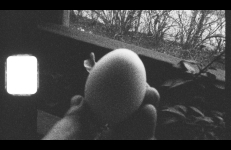
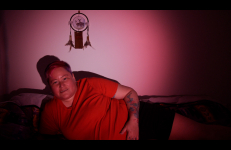
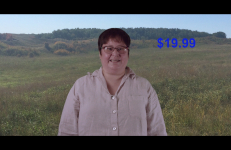
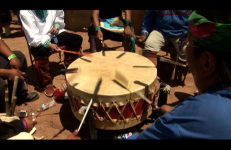
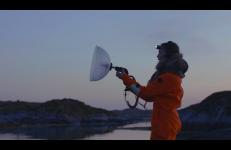
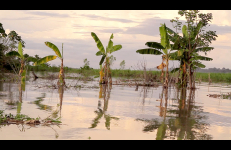
![AlienNATION [star spangled], New Red Order AlienNATION [star spangled], New Red Order](/sites/default/files/styles/215x140/public/2025-02/ALIENNATIOSS.jpg?itok=fa7jU7tV)
